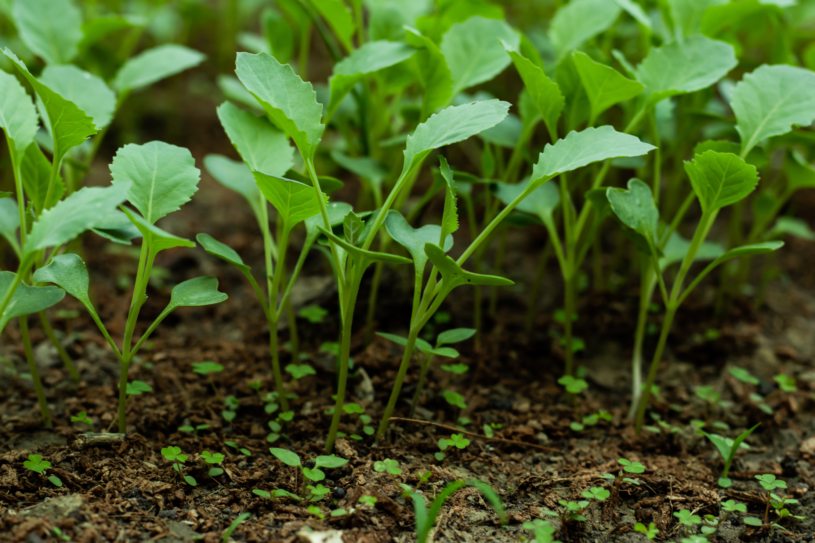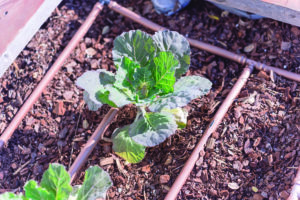
Feb 16, 2023
Iowa State research seeks answers for heat-tolerant broccoli
Broccoli is a cool-season crop that organic growers in Iowa normally transplant in April for a spring crop. Growers will often pick their best cultivar and transplant it every two weeks to keep bringing broccoli to market as long as possible into the heat of summer.
But, by knowing if the cultivars touted as heat-tolerant can actually perform in the summer heat and, of those, which ones perform best, growers may be able to transplant once and use cultivar choice to spread out harvest. That’s the conclusion of new research at Iowa State University (ISU).
Delays related to COVID kept the broccoli in the study from being planted until May 14, which raised questions of its own.
“Growers like to transplant by April 1, but can face delays, too,” said Ajay Nair, associate professor in ISU’s Department of Horticulture. “Our delay was more extreme, but we wanted to know what would happen if growers planted late.”

ISU researchers looked at the cultivars Belstar, Covina, Emerald Crown, Green Magic, Gypsy and Imperial. These cultivars are popular with growers and were selected for their performance in hot weather by using seed catalogs.
“Some seed catalogs may say a cultivar is heat tolerant,” said Anne Carey, ISU graduate research assistant. “Some may say the cultivar grows in the spring and summer, or may say a cultivar is slow-bolting. We wanted to evaluate broccoli cultivars that would perform well, irrespective of the temperatures in early summer.”
The broccoli was transplanted onto certified organic land at ISU’s Horticulture Research Station at Story City, Iowa, and grown with organic practices. Broccoli harvest began July 1 and occurred weekly for seven weeks with a final harvest on August 8.
High temperatures often lead to early bolting, more disease and a high rate of unmarketable heads, and the summer was hot.
The high and low temperatures at ISU’s research farm averaged 770 degrees F in the early season window of May 12 to June 9 and 850 F in both the mid-season window of June 10 to July 8 and the late season window of July 9 to August 6. Daytime highs in all three windows were close to 930 F —well above broccoli’s ideal growing temperature of between 60 to 650 F.
Surprisingly, the broccoli cultivars held up pretty well.
The number of marketable heads produced per 25 plants ranged from a high of 17 with Green Magic to a low of 9 with Belstar. The other cultivars produced either 14, 15 or 16 marketable heads per 25 plants.
Green Magic and Gypsy were the earliest cultivars to reach peak production. The highest number of marketable heads were harvested in the first two harvests, which were on July 2 and July 8.
Covina reached peak production in the middle of the season, with the highest number of marketable heads harvested in the third and fourth harvests, which were on July 14 and July 20.
Emerald Crown held a steady yield throughout the first four harvests, which were on July 2, July 8, July 14 and July 20.
Belstar and Imperial reached peak production later than other cultivars, with the highest number of marketable heads harvested in the sixth harvest, which was on July 31.
The study showed a planting system where growers select heat-tolerant broccoli cultivars with successive peak harvest times for a continuous harvest through the summer can work.
With the exception of Emerald Crown, all of the cultivars had a quick peak in the number of marketable heads that lasted only one or two harvests. This uniformity of when the cultivars’ production peaks is important.
“Growers look for uniformity in their crops,” Carey said. “For many vegetables, growers want one or two harvests at peak production and to be done with the field.”
There were no statistically significant differences between the different cultivars for the number or weight of marketable heads per plot. The diameter of marketable heads was also not significantly different between cultivars.
There were no statistically significant differences between cultivars for the number and weight of nonmarketable heads. Heads were determined to be nonmarketable by the presence of yellow eyes, brown discoloration, loose head, heading or bolting.
Predicting how broccoli cultivars will perform in the summer heat is challenging. The speed of growth, head diameter, other factors and, of course, the number of nonmarketable heads is all affected by hot weather.
“These cultivars were grown under Iowa conditions,” Carey said. “The results may not be exactly the same in your area.”
Only try this planting system on a small scale.
There were differences between cultivars even if they weren’t statistically significant. Green Magic appeared to best fit the planting system with the largest number of marketable heads and low rates of non-marketability.
Imperial also produced a large number of marketable heads but didn’t reach marketable size until the last two weeks of the trial. Covina also produced a large number of marketable heads but had higher rates of unmarketable heads.
Emerald Crown’s longer harvest window of four weeks was an issue. This was also an issue with Gypsy, which, after its peak in the first two harvests, still had significant production in the third.
Belstar produced the lowest weight and number of marketable heads, had a significantly higher rate of bolting and appeared to be the least suitable.
“Spring is one of the busiest seasons on the farm,” Nair said, and broccoli isn’t easy to grow. Events may limit growers’ ability to transplant at the ideal time.
Predicting when the weather will get hot isn’t easy but selecting heat tolerant cultivars with a plan of successive harvests can make it easier to extend harvest and sell broccoli later in the summer.









